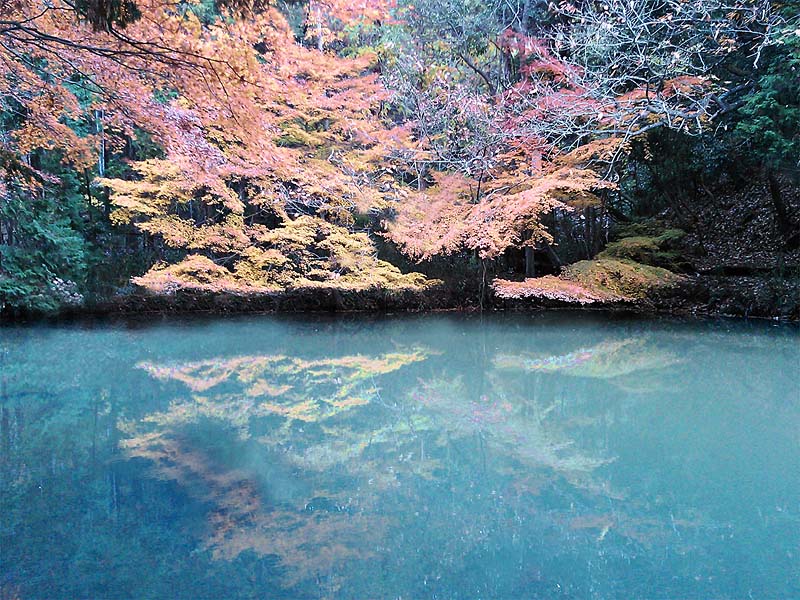

Momijidani
Momijidani is a scenic valley located in Takagamine, Kita-ku, Kyoto, and includes a pond and a circular garden. It is known as “Momijidani Teien” (Autumn Leaves Valley Garden), especially beautiful in autumn. The garden includes “Genha Pond,” which is approximately 1,500 tsubo in area, and is surrounded by a walking trail. This area has been called “Kurisuno” since the Heian period, and was used as a place to grow fodder for the horses of successive emperors, including Emperor Junna, as well as for falconry. It was also known as “Hagino” for its bush clovers, which were used in many waka poems. After the Kamakura period, the area became the temple domain of Daitokuji Temple, and a pond called Hakuba Pond existed in the valley, but it disappeared during the Edo period. After the Meiji Restoration, the valley passed to the private sector, and in 1870, an irrigation pond for farmers was created and tentatively named “Shin-ike. Subsequently, from 1930, large-scale cultivation was carried out by Taishin Huagaki, and “Shakadani Manor” was born. Since 2013, Genha Miyashita, the owner of Taikogei Villa, spent five years maintaining the garden, which is now open to the public as “Momijidani Garden. In the garden, visitors can enjoy cherry blossoms in spring, mountain azaleas, kishoubu in early summer, and autumn leaves in fall. It is also a rich natural environment where wild animals such as deer, raccoon dogs, and foxes can be seen, as well as wild birds such as ducks, herons, blue herons, river cicadas, and cormorants. It is especially famous for its “Garyu (reclining dragon) autumn leaves,” which attract many tourists.